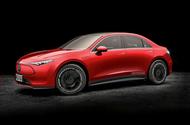CLA successor is among four new Entry Luxury models primed for production
CLA-sized compact saloon will bring full-width infotainment screen and choice of electric or petrol power
Prototypes of Mercedes-Benz‘s third-generation CLA have started to drop their disguise just weeks before the firm shows off a production-previewing concept at the Munich motor show.
Planned for a start to UK sales during the first half of 2025, the new CLA is the first of four production models earmarked to use the Modular Mercedes Architecture (MMA), a platform that supports both electric and internal combustion engine drivetrains, as showcased by the sleek Vision EQXX concept.
Other new Mercedes models based on the MMA include successor models to the existing CLA Shooting Brake, GLA and GLB – all of which are set to be launched by the middle of the decade.
The quartet form what Mercedes describes as its new Entry Luxury line-up.
Electric versions are set to take the EQC, EQC Shooting Brake, EQA, EQB names into production.
Developed to facilitate the transition to drivetrain electrification, the MMA replaces the existing Modular Front Architecture (MFA) with a skateboard-style design that, according to Mercedes CEO Ola Källenius, makes it suitable for a wide range of vehicle types.
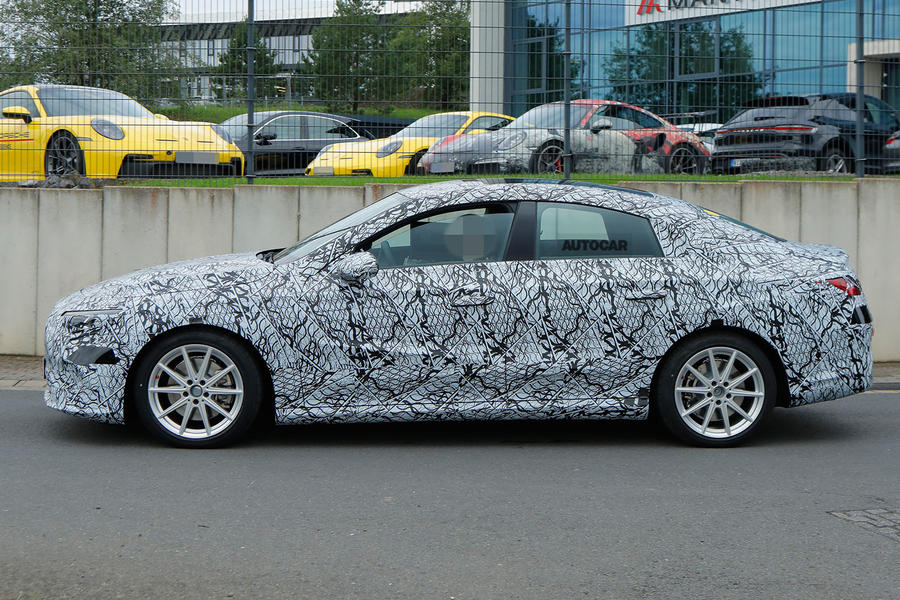
Central to the developments included on the new platform is an 800V electrical architecture and a silicon-carbide (SiC) power-electronics system. Together, they’re claimed to provide a significant improvement in efficiency.
Buyers of the new EQC saloon will be offered the choice of single-motor rear-wheel drive and dual-motor four-wheel drive in combination with either a lithium-ion-phosphate (LFP) or lithium ion battery (Li-ion), the most efficient combination of which is claimed to provide it with a range of up to 528 miles at a capacity of around 100kWh.
The permanent-magnet synchronous motors are part of a new range of in-house produced ATS 2.0 units set to feature in all future standard Mercedes EVs.
They operate in combination with a new two-speed gearbox, providing greater performance and a higher top speed than the existing EQA and EQB, both of which are based on an adapted version of the MFA.
Källenius, the architect of Mercedes’ net-carbon-neutral Ambition 2039 strategy, has also confirmed that the MMA has been engineered to support a new family of three- and four-cylinder petrol engines developed by Mercedes but to be produced in China by partner firm Geely.
“We will have an electrified internal combustion engine. We have engineers who have very intelligently packaged a very economical but high-performance next-generation hybrid [in the next CLA],” he said in a recent interview with Autocar.
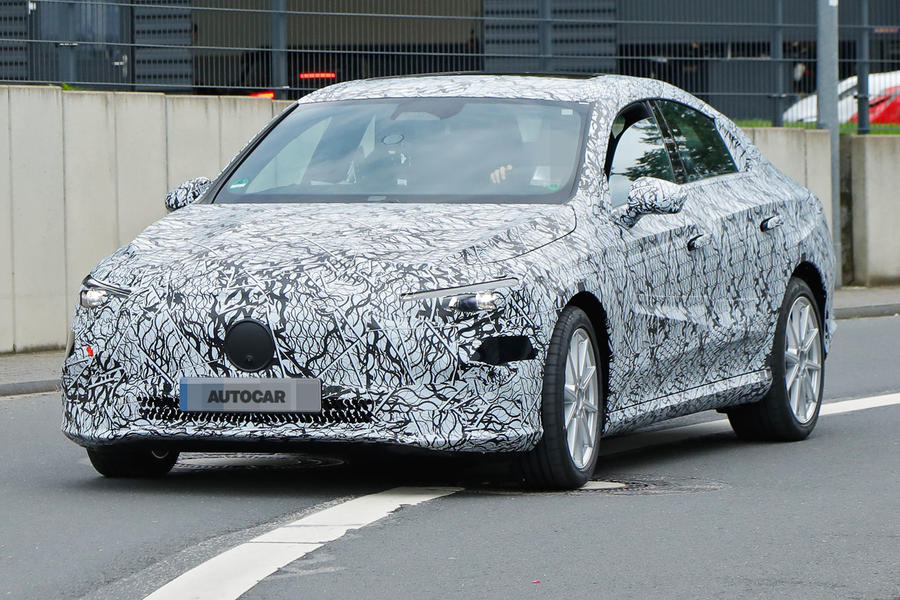
The new petrol-engined family, codenamed M252, is set to provide the CLA with 48V mild-hybrid properties using a gearbox-mounted integrated starter-generator (ISG).
“It’s a complete Mercedes development from A to Z,” Källenius said of the new CLA engine.
“Just as we have industrialised our current engines in China with good and competent suppliers, we will industrialise this engine in China. Today we export engines from China to Europe, and we will also do this with [for the] MMA.”
Källenius wouldn’t be drawn on whether MMA-based models would be sold with a plug-in hybrid (PHEV) drivetrain. “Prepared to be surprised,” he said.
On that note, Autocar can reveal Mercedes is in the midst of an engineering program that uses the new M252 engine as a generator in a range-extender (REx) drivetrain being considered for selected markets, including China.
The move mirrors that of Geely’s new Nordthor 8848 petrol engine. It’s used in various models, including the newly launched Galaxy L7 SUV and Galaxy L8 saloon, where it’s offered as a REX, offering up to 857 miles of range and combined consumption of 45.2mpg on the CLTC test cycle in combination with a three-speed Dedicated Hybrid Transmission (DHT).
REx models have enjoyed an upswing in sales in China recently, owing to their ability to reduce the range anxiety typically associated with EVs while providing extended ranges and relatively short refuelling times.
Diesel engines, meanwhile, have been ruled out completely for the new CLA.
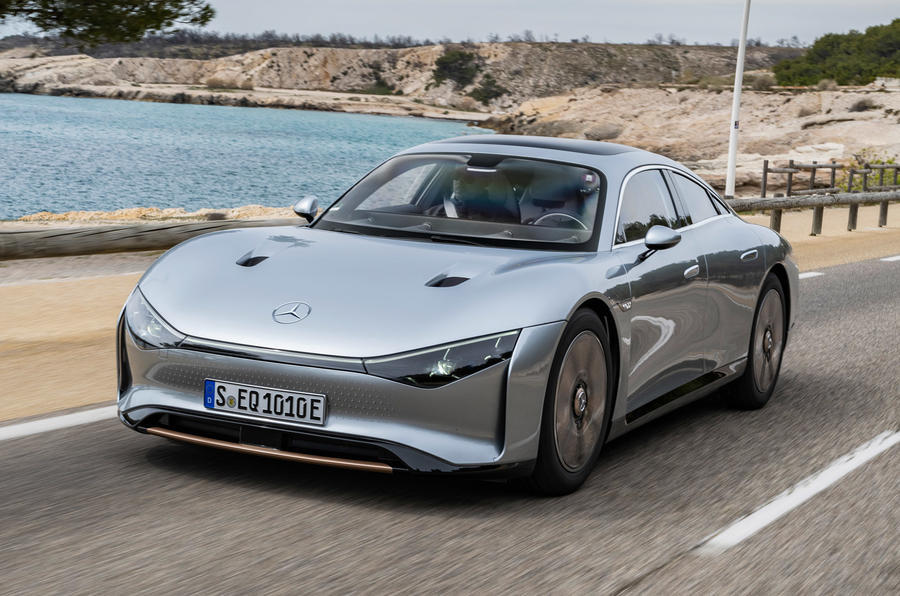
Moving on from drivetrains, Källenius revealed that the upcoming third-generation CLA would retain the full-width display previewed in the EQXX.
“We believe pillar-to-pillar [digital displays] are a must,” he said. “All Mercedes-Benz models will have this feature in the future. Definitively in China, but also for the rest of the world.”
The new display will be mated with Mercedes’ new MB.OS operating system, as revealed earlier this year.
Mercedes plans to produce the CLA with sensors, cameras and software for level-two driver-assistance. Buyers will be able to enable them and other optional features via an over-the-air on-demand service, which uses 5G connectivity.
During its model cycle, the CLA is also expected to offer level-three assistance in markets where the regulatory framework permits.
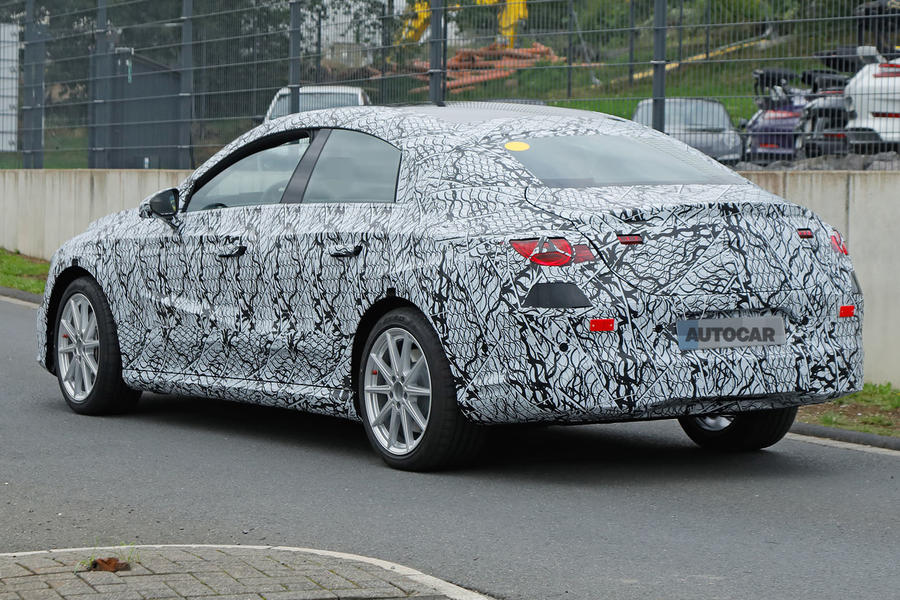
The styling of the third-generation CLA updates the design of today’s second-generation model. Key elements include a new shark-nose-style front grille set low in the front bumper. Bookmarked by angular headlamps, it’s planned to offer illumination as an option. The rear, meanwhile, receives a heavily raked windscreen and LED tail-lights conjoined by a light band across the width of the bootlid.
The saloon stretches to around 4700mm in length, with a wheelbase put at close to 2800mm.
Production of the new CLA and other MMA-based models for the UK market is planned to take place at Mercedes’ plants in Rastatt (Germany) and Kecskemét (Hungary). Additionally, production is planned for the company’s plant in Beijing (China).
Prototypes of Mercedes-Benz‘s third-generation CLA have started to drop their disguise just weeks before the firm shows off a production-previewing concept at the Munich motor show.
Planned for a start to UK sales during the first half of 2025, the new CLA is the first of four production models earmarked to use the Modular Mercedes Architecture (MMA), a platform that supports both electric and internal combustion engine drivetrains, as showcased by the sleek Vision EQXX concept.
Other new Mercedes models based on the MMA include successor models to the existing CLA Shooting Brake, GLA and GLB – all of which are set to be launched by the middle of the decade.
The quartet form what Mercedes describes as its new Entry Luxury line-up.
Electric versions are set to take the EQC, EQC Shooting Brake, EQA, EQB names into production.
Developed to facilitate the transition to drivetrain electrification, the MMA replaces the existing Modular Front Architecture (MFA) with a skateboard-style design that, according to Mercedes CEO Ola Källenius, makes it suitable for a wide range of vehicle types.
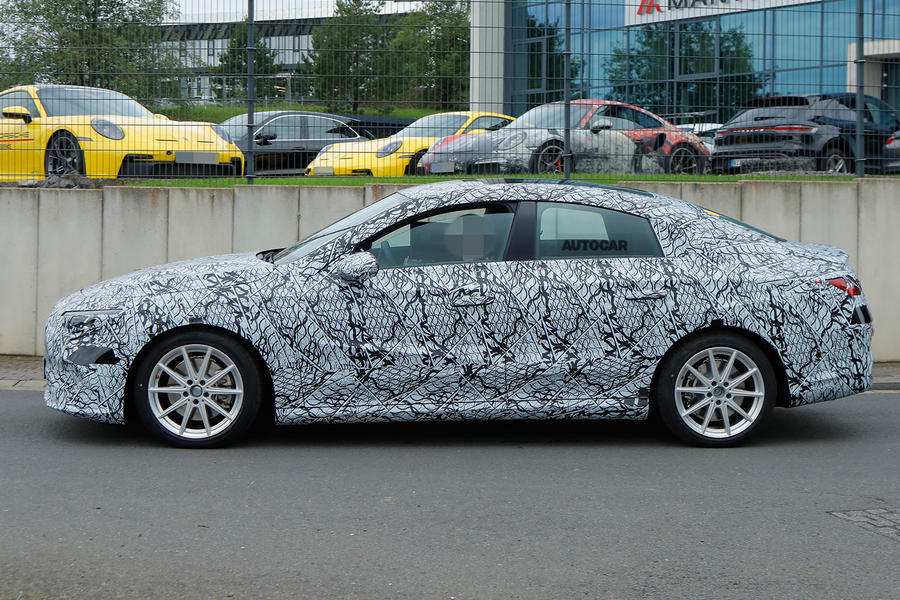
Central to the developments included on the new platform is an 800V electrical architecture and a silicon-carbide (SiC) power-electronics system. Together, they’re claimed to provide a significant improvement in efficiency.
Buyers of the new EQC saloon will be offered the choice of single-motor rear-wheel drive and dual-motor four-wheel drive in combination with either a lithium-ion-phosphate (LFP) or lithium ion battery (Li-ion), the most efficient combination of which is claimed to provide it with a range of up to 528 miles at a capacity of around 100kWh.
The permanent-magnet synchronous motors are part of a new range of in-house produced ATS 2.0 units set to feature in all future standard Mercedes EVs.
They operate in combination with a new two-speed gearbox, providing greater performance and a higher top speed than the existing EQA and EQB, both of which are based on an adapted version of the MFA.
Källenius, the architect of Mercedes’ net-carbon-neutral Ambition 2039 strategy, has also confirmed that the MMA has been engineered to support a new family of three- and four-cylinder petrol engines developed by Mercedes but to be produced in China by partner firm Geely.
“We will have an electrified internal combustion engine. We have engineers who have very intelligently packaged a very economical but high-performance next-generation hybrid [in the next CLA],” he said in a recent interview with Autocar.

The new petrol-engined family, codenamed M252, is set to provide the CLA with 48V mild-hybrid properties using a gearbox-mounted integrated starter-generator (ISG).
“It’s a complete Mercedes development from A to Z,” Källenius said of the new CLA engine.
“Just as we have industrialised our current engines in China with good and competent suppliers, we will industrialise this engine in China. Today we export engines from China to Europe, and we will also do this with [for the] MMA.”
Källenius wouldn’t be drawn on whether MMA-based models would be sold with a plug-in hybrid (PHEV) drivetrain. “Prepared to be surprised,” he said.
On that note, Autocar can reveal Mercedes is in the midst of an engineering program that uses the new M252 engine as a generator in a range-extender (REx) drivetrain being considered for selected markets, including China.
The move mirrors that of Geely’s new Nordthor 8848 petrol engine. It’s used in various models, including the newly launched Galaxy L7 SUV and Galaxy L8 saloon, where it’s offered as a REX, offering up to 857 miles of range and combined consumption of 45.2mpg on the CLTC test cycle in combination with a three-speed Dedicated Hybrid Transmission (DHT).
REx models have enjoyed an upswing in sales in China recently, owing to their ability to reduce the range anxiety typically associated with EVs while providing extended ranges and relatively short refuelling times.
Diesel engines, meanwhile, have been ruled out completely for the new CLA.

Moving on from drivetrains, Källenius revealed that the upcoming third-generation CLA would retain the full-width display previewed in the EQXX.
“We believe pillar-to-pillar [digital displays] are a must,” he said. “All Mercedes-Benz models will have this feature in the future. Definitively in China, but also for the rest of the world.”
The new display will be mated with Mercedes’ new MB.OS operating system, as revealed earlier this year.
Mercedes plans to produce the CLA with sensors, cameras and software for level-two driver-assistance. Buyers will be able to enable them and other optional features via an over-the-air on-demand service, which uses 5G connectivity.
During its model cycle, the CLA is also expected to offer level-three assistance in markets where the regulatory framework permits.
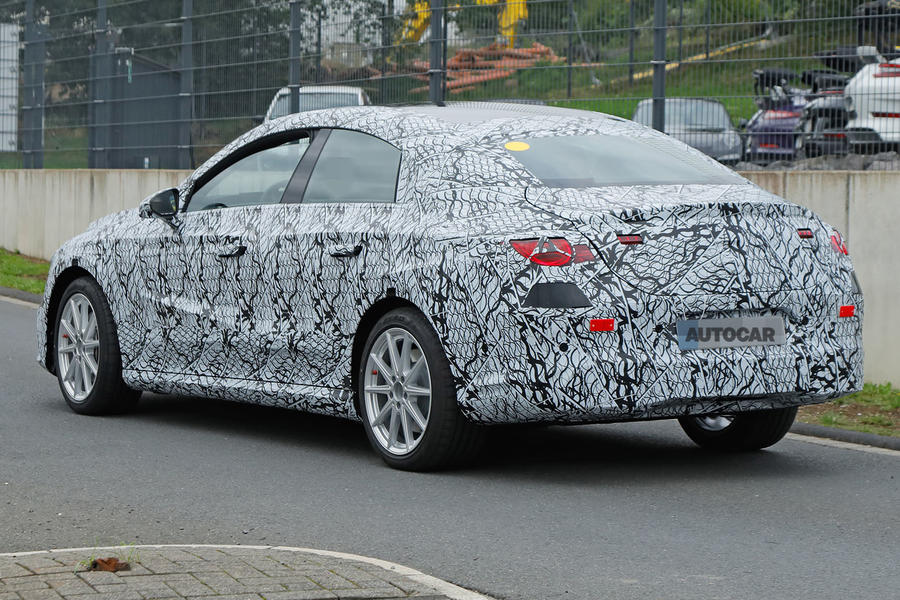
The styling of the third-generation CLA updates the design of today’s second-generation model. Key elements include a new shark-nose-style front grille set low in the front bumper. Bookmarked by angular headlamps, it’s planned to offer illumination as an option. The rear, meanwhile, receives a heavily raked windscreen and LED tail-lights conjoined by a light band across the width of the bootlid.
The saloon stretches to around 4700mm in length, with a wheelbase put at close to 2800mm.
Production of the new CLA and other MMA-based models for the UK market is planned to take place at Mercedes’ plants in Rastatt (Germany) and Kecskemét (Hungary). Additionally, production is planned for the company’s plant in Beijing (China).
Source: Autocar
